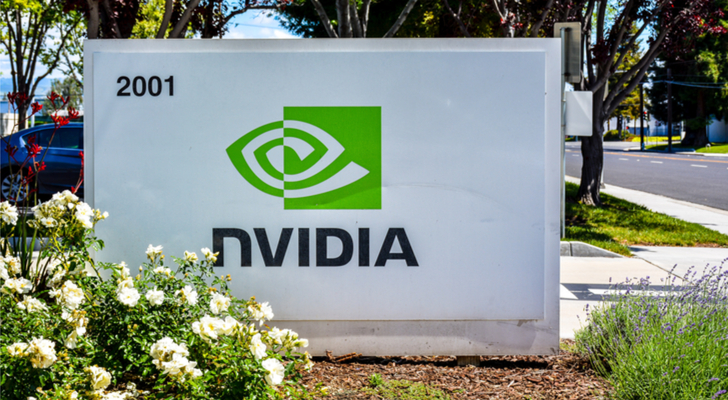The rise of Nvidia (NASDAQ:NVDA) has been driven, not by bitcoin, but by its data-center business.
As the Cloud Czars — Amazon.com (NASDAQ:AMZN), Microsoft (NASDAQ:MSFT), Apple (NASDAQ:AAPL), Alphabet (NASDAQ:GOOG, NASDAQ:GOOGL) and Facebook (NASDAQ:FB) — race to add artificial intelligence to their clouds to support next-generation services, they’re buying fast graphics chips from Nvidia in car-load lots.
This has fueled Nvidia’s hyper-growth in the stock market, the shares up nearly 300% in just two years. Lately, Advanced Micro Devices (NASDAQ:AMD), which competes with it in graphics chips used for these applications, has joined the party.
But how long will that party go on?
Clouds Are Cheap
The heart of the cloud is efficiency. Clouds are cheap and originally used cheap chips, along with free open-source operating systems, to deliver value to customers.
This attitude of saving money is still in the DNA of most cloud players. This helped Intel (NASDAQ:INTC) hide its own problems from the market for years because until recently, its sales to data centers
continued to grow thanks to its cost-efficient silicon.
Cloud operators, however, are constantly on the lookout for ways to save even more money and to make their offerings unique.
Google, for instance, is helping a city near my home in Atlanta treat water using the heat generated by its data center, and recently put in 78 megawatts of solar power to avoid paying for the nuclear plants Southern Co. (NYSE:SO) is still building in the state.
Clouds Want Their Own AI
Another way to make a cloud both unique and more cost-effective is to design your own chips for it. The Cloud Czars all own chip-design houses. Google is now on its second generation of chips for AI, called Tensor Processing Units, because they’re built around its Tensor Flow, a library of open-source machine-learning tools.
Amazon, which bought Annapurna Labs in 2015, is also designing its own chips for AI. Apple is designing power-management chips as well as AI chips. Microsoft showed off its cloud AI chips at its recent Brainwave Conference. Even Facebook now has a chip-design team.
The Cloud Czars are looking to build both their own cloud and device chips, trying to get the balance of machine learning right so it’s both powerful and reliable.
But it’s clear that they’re no longer buying just “cheap” chips. They have the resources to design their own silicon, and their own machine-learning road maps are going to be more important than any chip supplier’s road map in the future.
Who Wins?
The cloud “arms merchants,” including NVDA and AMD, thus find themselves, increasingly, competing with their own customers.
Not all the news is bad. Just as FedEx (NYSE:FDX) has survived despite Amazon doing its own last-mile deliveries, so the cloud arms merchants can continue to do well, adapting themselves to big customer needs and serving smaller clouds.
But it’s not going to be easy money. Just because “hyperscale data center” CapEx (what Synergy Research Group terms cloud) has doubled in three years, doesn’t mean revenues for the arms merchants will double in three years, even if capital spending by the Czars does the same.
The Bottom Line on Nvidia Stock
Progress in technology is driven by competition, and for those who use clouds, or devices, which includes anyone who is building machine-learning applications, the future looks bright.
But the arms merchants like Nvidia are going to increasingly find themselves competing with their own best customers for orders, and this fact is going to be plugged into Wall Street’s investment assumptions. Make sure they’re also plugged into yours as well.
Dana Blankenhorn is a financial and technology journalist. He is the author of a new mystery thriller, The Reluctant Detective Finds Her Family, available now at the Amazon Kindle store. Write him at danablankenhorn@gmail.com or follow him on Twitter at @danablankenhorn. As of this writing, he owned shares in MSFT and AMZN.

